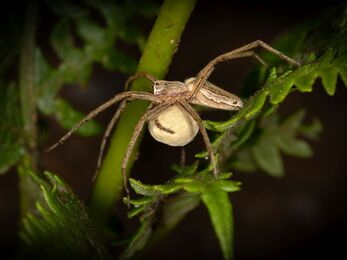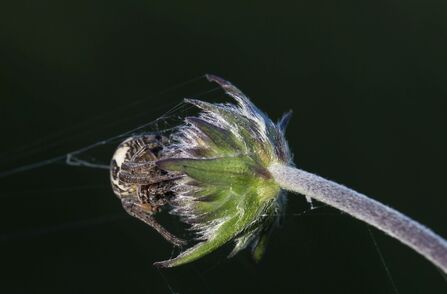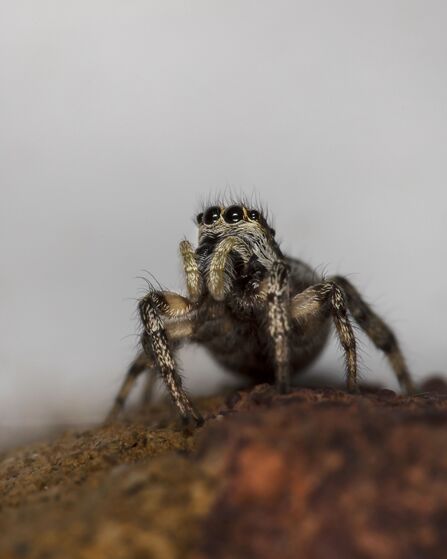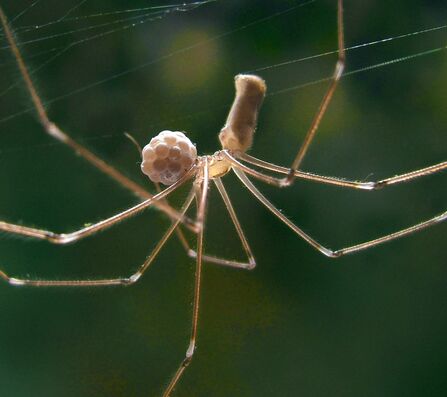Ian Carle, our Nature Reserves Manager explores the multiple different uses of silk within the spider community. All spiders produce silk, but if you thought they just used it to catch their prey read on…
Wrapping
All species of spider wrap their eggs in silk to protect them from drying out and extreme heat or cold. Wrapping them in silk provides a defence against parasites and predators. Some species such as the Nursery Web Spider (Pisaura mirabilis) construct an egg-sac that enables the female to provide the ultimate protection for her eggs – the egg-sac she produces is robust enough for her to carry it around with her. She will then construct a nursery web, hang up her egg-sac and stand guard until the eggs hatch and the youngsters disperse! The Nursery Web Spider is common in areas of shorter vegetation in our area.
Sputnik Spider (Paidiscura pallens) – tiny spider identifiable from the distinctive egg-sac. Found on the underside of the leaves of broadleaved trees, with a preference for Oak. Old Park Wood Nature Reserve is a good place to spot them.





